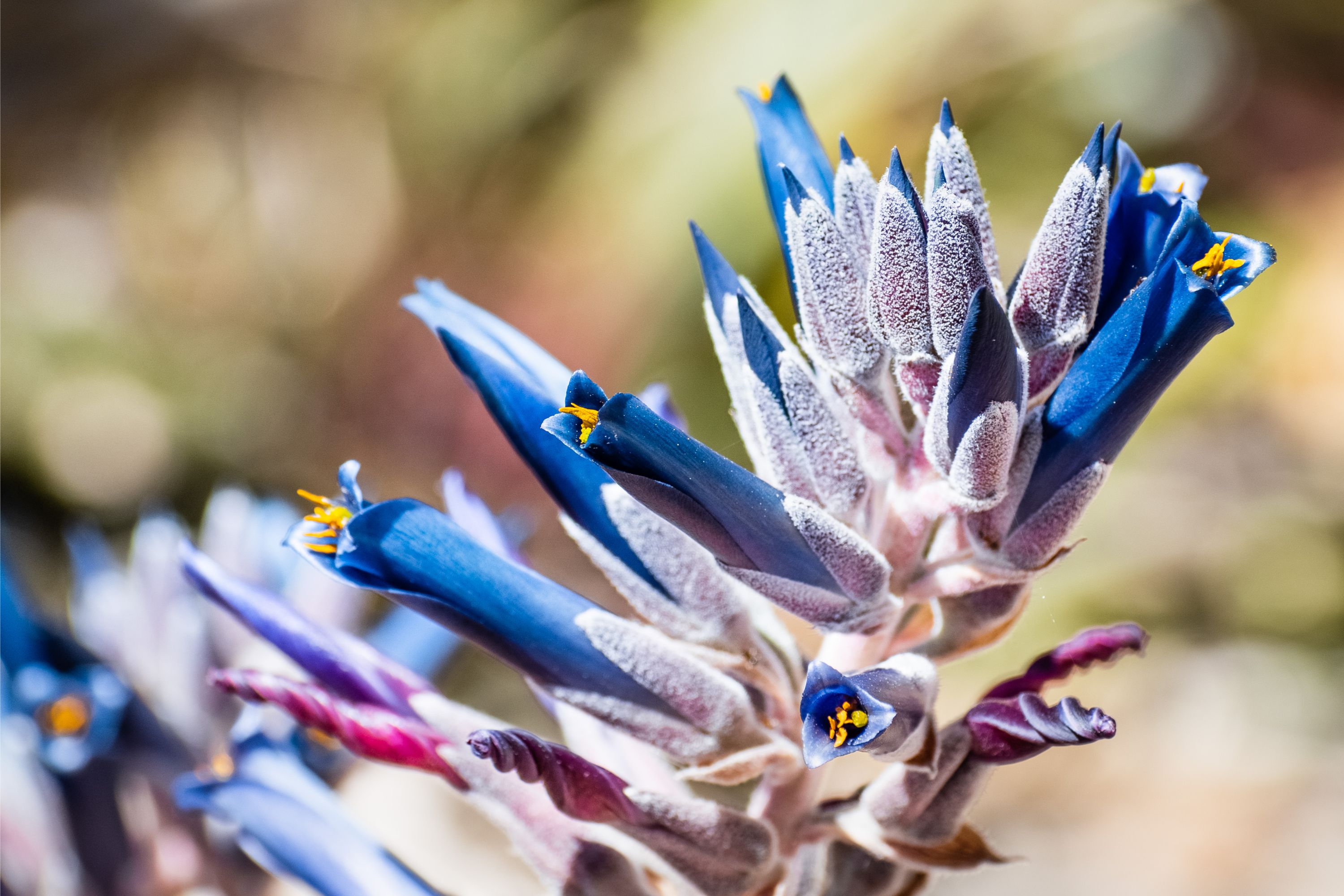Puya coerulea
(Puya coerulea)

Description
Puya coerulea is a species of plant in the genus Puya. This species is endemic to Chile. Puya is a genus of the botanical family Bromeliaceae. It is the sole genus of the subfamily Puyoideae, and is composed of 226 species. These terrestrial plants are native to the Andes Mountains of South America and southern Central America. Many of the species are monocarpic, with the parent plant dying after one flower and seed production event. The species Puya raimondii is notable as the largest species of bromeliad known, reaching 3 m tall in vegetative growth with a flower spike 9–10 m tall. The other species are also large, with the flower spikes mostly reaching 1–4 m tall. The name Puya was derived from the Mapuche Indian word meaning "point". The genus is commonly divided into two subgenera, Puya, containing eight species, and Puyopsis containing the remainder. The subgenera can be distinguished by the presence of a sterile inflorescence at the branch apex in Puya, which are fertile in Puyopsis. Some species of Puya in Chile, locally known as chagual, are used to make salads from the base of its young leaves or stem. A common species is Puya chilensis.
Taxonomic tree:







